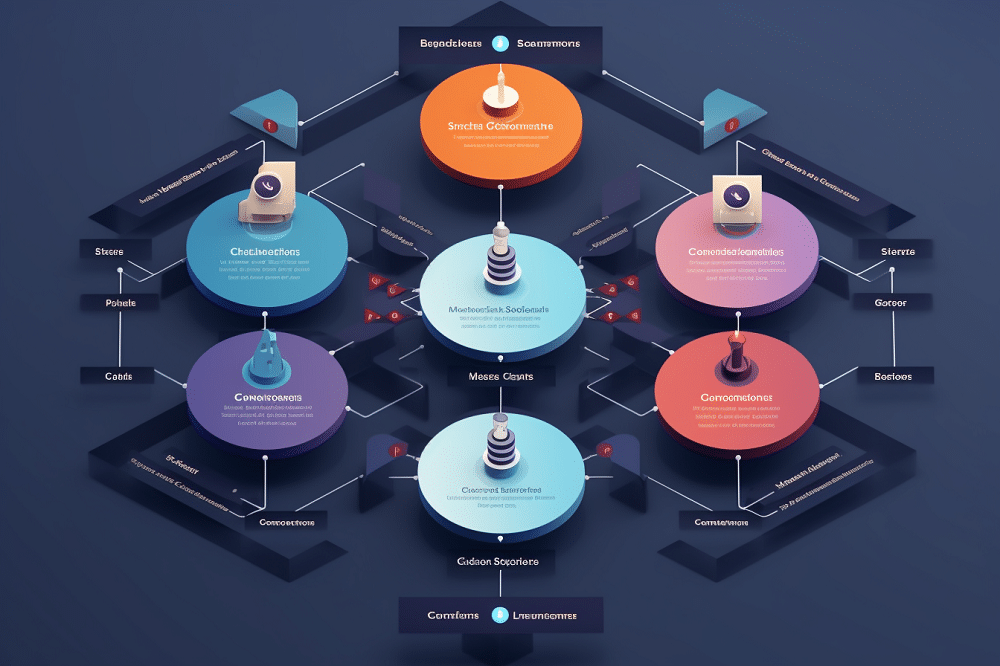Ethereum, the world’s second most popular blockchain, has long grappled with scalability challenges. As its user base grows, so does the strain on its infrastructure, leading to higher transaction fees and slower processing times.
To address these issues, Ethereum developers have been working tirelessly on various upgrades, with one of the most promising solutions being danksharding and its precursor, proto-danksharding. These innovations represent critical components in upgrading Ethereum’s consensus layer, primarily enhancing scalability and efficiency, especially concerning layer-2 rollup solutions.
This guide explores the role of danksharding and proto-danksharding in solving Ethereum’s scalability issues.
Understanding Danksharding And Proto-Danksharding
Danksharding is a layer-2 scaling solution that helps unlock Ethereum’s full capacity, enabling it to handle a massive influx of users without sacrificing speed or cost-effectiveness. Meanwhile, Proto-Danksharding is an intermediary step in the Danksharding roadmap.
Approved as part of EIP-4844, Proto-Danksharding has been officially integrated into Ethereum’s improvement proposals, culminating in the Ethereum Cancun-Deneb upgrade. The journey toward implementation began with the Goerli testnet activation of the upgrade.
Then, the Sepolia testnet, followed by the Holesky testnet. Meanwhile, the mainnet implementation date remains undisclosed by the Ethereum development team, hinting at the complexity of the upgrade.
Danksharding And Ethereum Scaling
Danksharding will make Ethereum’s layer-2 solutions, mainly rollups, more cost-effective and faster regardless of user influx. It represents one of the final stages in Ethereum’s long-term upgrade journey, which has seen significant transitions, including the gradual shift from proof-of-work paradigm to proof-of-stake consensus mechanisms.
Data Blobs: The Game-Changer
At the heart of Danksharding and Proto-Danksharding lies the introduction of data blobs. These blobs, or large data units, will become integral components of Ethereum’s transactional structure.
Unlike the current method of storing transaction data using calldata, which poses scalability challenges, blobs offer a more efficient alternative. Calldata has limitations, especially in the context of rollups. The data stored in calldata must be processed by all Ethereum nodes and remains on the blockchain permanently, leading to unnecessary storage overhead.
Proto-Danksharding addresses this issue by introducing data blobs attached to transaction blocks, set to delete within one to three months automatically.
The KZG Polynomial Commitment Scheme
As a strong effort to make Ethereum more scalable, lower transaction costs, and keep the network’s core values of decentralization and security, rollups driven by technology like danksharding are very important.
Spreading fixed costs across multiple deals is possible with this method. This lowers the costs that come up when gas prices change. To optimize rollup solutions further, Proto-Danksharding leverages the KZG polynomial commitment scheme.
The beauty of the KZG scheme lies in its ability to validate data within blobs without the need to process the entire blob directly or reveal its full contents. This aligns seamlessly with the zero-knowledge design employed by some layer-2 protocols, enhancing Ethereum’s scalability without compromising security or decentralization.
The Blockchain Trilemma
The blockchain trilemma, coined by Vitalik Buterin, Ethereum’s co-founder, posits that achieving scalability, decentralization, and security is a formidable challenge for blockchain networks. However, Danksharding and Proto-Danksharding represent Ethereum’s response to this trilemma, offering a pathway to balance these competing priorities. It is worth noting that security is inherently linked to decentralization.
Therefore, a more decentralized network, characterized by a larger pool of nodes, enhances security, making it increasingly difficult for malicious actors to compromise the network. However, this decentralization comes at a cost – scalability. As the network grows, the processing burden on individual nodes increases, leading to slower transaction speeds and higher costs.
The Evolution Of Ethereum’s Roadmap
The completion of Ethereum’s roadmap is subject to technological advancements and evolving priorities. While specific updates, such as staking withdrawals, are anticipated in the near term, others, like quantum resistance, may take several years.
The concurrent development of various components at varying speeds further complicates the roadmap’s timeline. As the network continues to evolve (in scalability and security), the need for significant changes diminishes.
Instead, the focus shifts towards fine-tuning existing systems to ensure optimal functionality and resilience in the face of evolving challenges.
Optimized Layer-2 Solutions
Centralized payment giants like Visa have long enjoyed dominance in transaction processing efficiency, thanks to closed networks and centralized control. However, layer-2 solutions, bolstered by innovations like Danksharding and Proto-Danksharding, are leveling the playing field for blockchain systems.
These optimized layer-2 solutions enable Ethereum to match the transaction processing efficiency of these centralized entities while maintaining decentralization and security.
A Bright Future
Solutions like danksharding pave the way for Ethereum to become a more robust and scalable blockchain platform by addressing scalability challenges and optimizing transaction efficiency. While the completion date of Ethereum’s roadmap remains uncertain, the progress made with the recent upgrades is a testament to the Ethereum community’s commitment to realizing its vision of a decentralized future.
At Tokenhell, we help over 5,000 crypto companies amplify their content reach—and you can join them! For inquiries, reach out to us at info@tokenhell.com. Please remember, cryptocurrencies are highly volatile assets. Always conduct thorough research before making any investment decisions. Some content on this website, including posts under Crypto Cable, Sponsored Articles, and Press Releases, is provided by guest contributors or paid sponsors. The views expressed in these posts do not necessarily represent the opinions of Tokenhell. We are not responsible for the accuracy, quality, or reliability of any third-party content, advertisements, products, or banners featured on this site. For more details, please review our full terms and conditions / disclaimer.

